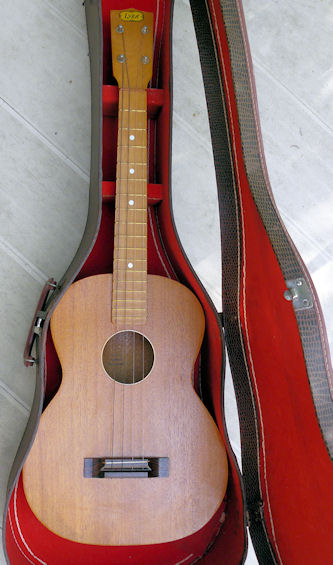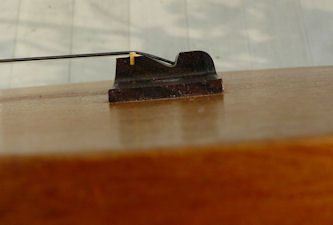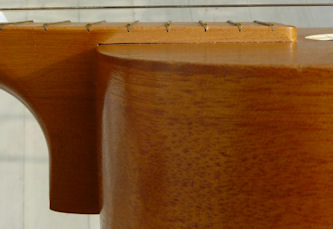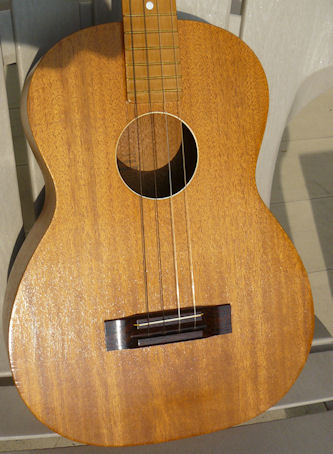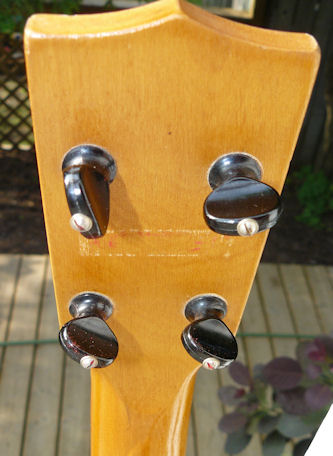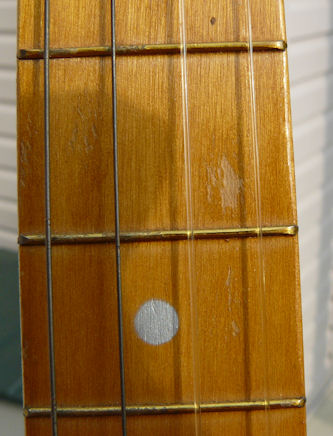Nice uke man! before you replace the saddle, why don't you try redoing the angle on the back side of the bridge to relieve the string contact? A little block sanding ought to do it and that little area would be no problem to refinish if necessary. Just a thought...

Thought about that, but the saddle itself is very thin. I'm not sure of the material (might be bone, plastic or even wood) so I want to upgrade it. I really think it needs a wider saddle. Something in the back of my brain wants to relate mass with frequency - that needs to be researched, but I'm pretty sure a very thin saddle is not as effective a frequency/energy transmitter/filter as a thicker one (within certain parameters). Something to do with the amplitude of the wave, too.
Plus it's a chance for me to install one of the glass saddles I had made recently. See how they work. If I don't like the tone, i can replace it with a bone saddle I have.
Still looking for the history of Lyra. Not a lot of hard data online.
"Lyra" appears to have been a brand name of an importer or distributor - Bruno - and not an actual maker of stringed instruments. Guitars, ukes, and mandolins bearing the Lyra name have been with labels or stamps as "Made in USA," "Made in Japan," as well as this one from West Germany. Bruno itself is hard to trace and I have npot been able to find out when they started, or stopped (or if they are still in business), and if Lyra remained their trademark (and if not, when it changed).
This on Flea Market Music:
LYRA was a trademark of NY distributors C. Bruno and Sons. In the 'teens and twenties they used it on a line of Oscar Schmidt built instruments, mainly 12-strings and some pretty nice koa ukes. The Bruno name itself turns up on all sorts of stuff, from high end Koa to budget Regal-made instruments in the 30's to novelty ukes in the 40's/50's, to Japanese ( and apparently German) imports in the 60's/70's. A nice Koa rope bound uke in my collection has a label reading "Lyra, handmade Hawaiian Ukulele, Bruno, reg U.S. pat. office", and is definitely Schmidt built.
That relates to the early Lyra, of the 1920s and 30s. Most comments point to later modles as being a re-labeled, budget instrument, possibly made by either Regal or Harmony at some point, and imported by Bruno, but possibly also imported by other companies in other nations. Not sure if Bruno is still in business. Pretty much all musical instruments like these, outside the highest-end or custom luthier items, were made in Japan around that time. A few years later, the manufacturing moved to Korea, now it’s in China and Indonesia (and a rare few in Pakistan).
